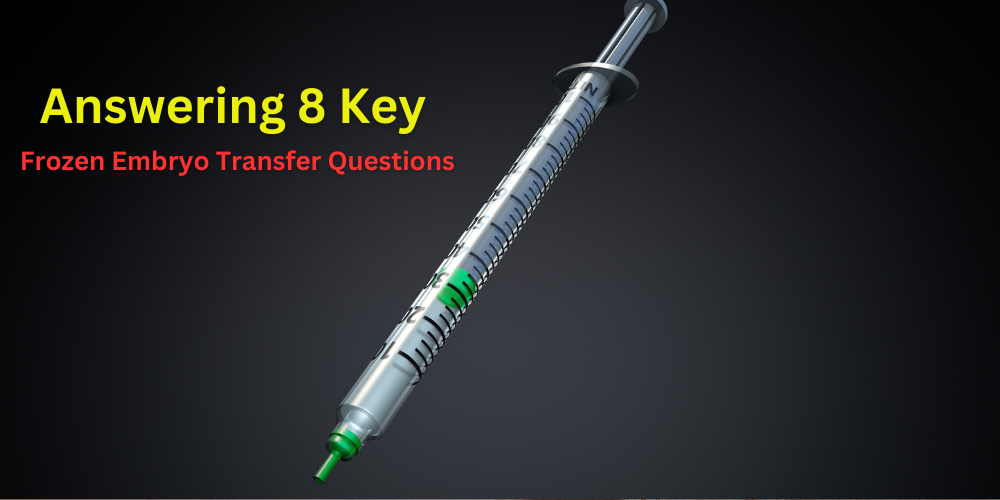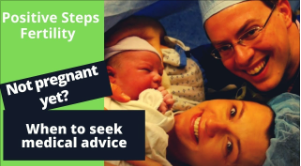If you are considering in vitro fertilization (IVF) to help you conceive, you may have heard of frozen embryo transfer (FET). FET is a type of IVF treatment that uses cryopreserved embryos (fertilized eggs that have been frozen) from a previous IVF cycle or a donor.
FET can offer several benefits, such as reducing the risk of multiple pregnancies, allowing for genetic screening, and saving time and money. In this blog post, we will explain what FET is and how the FET cycle works.
What is an embryo transfer?
The embryo transfer is a simple and relatively painless procedure that takes about 15 minutes. The doctor will insert a thin catheter through your cervix and into your uterus under ultrasound guidance. The catheter will release one or two thawed embryos into your uterine cavity. After resting for a short time before going home, you will continue taking progesterone until your pregnancy test, which is usually done 10 days after the transfer.
What is frozen embryo transfer (FET)?
FET is a process in which a frozen embryo is thawed and transferred to the uterus. The embryo can be from your own eggs and sperm, from a donor egg and/or sperm, or from a full embryo donation. The embryo is usually frozen at the blastocyst stage, which is five or six days after fertilization.
Why choose FET?
There are many reasons why you may opt for FET over a fresh embryo transfer (in which an embryo that has not been frozen is transferred to the uterus). Some of them are:
- You have extra embryos from a previous IVF cycle. If you have more than one or two good-quality embryos after your egg retrieval, you may choose to freeze the extra ones for future use. This way, you can avoid the risks of transferring multiple embryos at once, such as preterm birth and low birth weight. You can also use the frozen embryos if your fresh transfer fails or if you want to have another child later.
- You want to do genetic testing on your embryos. Some couples may want to screen their embryos for chromosomal abnormalities or genetic diseases before transferring them to the uterus. This can increase the chances of having a healthy baby and reduce the risk of miscarriage. However, genetic testing takes time, so the embryos have to be frozen while waiting for the results.
- You want to optimize your uterine lining. Sometimes, the hormonal stimulation that is used to produce multiple eggs for IVF can affect the quality of the uterine lining, making it less receptive to implantation. By freezing the embryos and transferring them in a later cycle, you can allow your lining to recover and prepare it with estrogen and progesterone supplements.
- You have health issues that prevent a fresh transfer. Some women may have medical conditions that make a fresh transfer unsafe or less likely to succeed, such as ovarian hyperstimulation syndrome (OHSS), endometriosis, or polycystic ovary syndrome (PCOS). In these cases, FET can be a better option.
The frozen embryo transfer cycle can be done in two ways: medicated or natural. The main difference is whether you use medications to suppress your natural ovulation and control your uterine lining development or not.
What is a medicated FET cycle?
In a medicated FET cycle, you will start taking estrogen tablets on day 2, 3, or 4 of your menstrual cycle. The estrogen will help thicken your uterine lining and prevent your ovaries from producing follicles. You will come back to the clinic after about a week to check your lining with an ultrasound scan and blood work.
If your lining is thick enough (usually around 8 mm), you will start taking progesterone injections or suppositories. The progesterone will make your lining more receptive to implantation and mimic the natural luteal phase of your cycle. After three or five days of progesterone support, depending on the stage of your embryo, you will have your embryo transfer.
What is a natural FET cycle?
In a natural FET cycle, you will not take any medications to suppress your ovulation or control your lining. Instead, you will monitor your natural cycle with urine ovulation predictor kits (OPKs) or blood tests to detect when you ovulate. Once you ovulate, you will start taking progesterone supplements as in a medicated cycle. Your embryo transfer will take place three or five days after ovulation.
Does age affect frozen embryo transfers?
The success rates of FET depend on many factors, such as your age, the quality and number of embryos transferred, and the cause of infertility. However, research shows that FET has similar or slightly higher success rates than fresh embryo transfer. According to the Society for Assisted Reproductive Technology (SART), the live birth rates per FET cycle in 2018 were:
- 41.3% for women under 35
- 40.9% for women 35-37
- 37.9% for women 38-40
- 33.6% for women 41-42
- 26.6% for women over 42
How long does a frozen embryo transfer take?
A typical FET cycle lasts about 3-4 weeks. You will need to have regular monitoring visits to check your lining thickness, hormone levels, and ovulation status. Once your lining is ready, you will start progesterone supplementation for 3 or 5 days before the embryo transfer.
The embryo transfer is a simple procedure that takes about 15 minutes and does not require anesthesia. You will need to rest for a few hours after the transfer and then resume normal activities. You will continue taking progesterone until your pregnancy test, which is usually done about 10 days after the transfer.
Is frozen embryo transfer right for you?
FET is a type of IVF treatment that uses frozen embryos from a previous cycle or a donor. FET can offer several advantages over fresh embryo transfer, such as reducing the risk of multiple pregnancies, allowing for genetic testing, and saving time and money. FET can be done in a medicated or natural cycle, depending on your preference and situation. The success rates of FET are very similar to fresh embryo transfers, but there are also some risks and complications to consider.
If you find yourself overwhelmed and confused on your fertility journey, don’t suffer in silence. Reach out to a fertility specialist today to get some guidance on the right path for you. Find answers. Find peace.
Do you still have questions? We are here to help. Contact us at Positive Steps to speak to our fertility specialists to tailor a path that suits your unique situation.
Other information you may find of interest:




